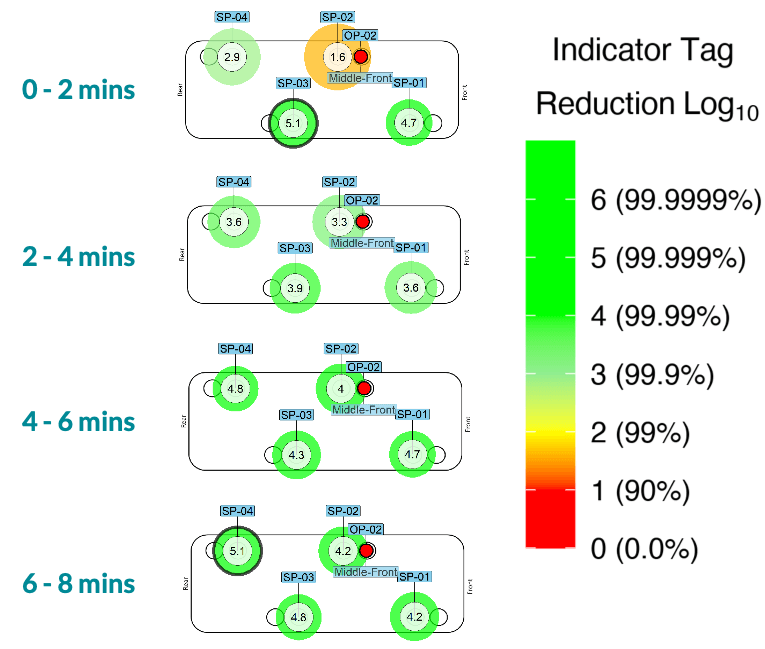Case Study: Passenger Railcar Ventilation and Filtration Verification Using DNA-tagged Liquid Aerosols and Tracer Gas Dilution
RHP Risk Management conducted a pilot study and follow-up expanded mobile operation study to evaluate pathogen mobility, filtration efficiency, and outside air dilution ventilation of the heating, ventilation, and air conditioning (HVAC) systems within passenger railcars and platforms of a major United States rapid transit system to determine the effectiveness of current HVAC conditions for reducing the risk of virus transmission.
RHP utilized DNA-tagged liquid aerosols to mimic the size patterns of the exhale released by potentially infected passengers while talking, sneezing, and coughing. For each test conducted during the initial pilot study, a DNA-tagged liquid aerosol spray was released within a passenger cabin, the conductor cabin, and the platform. The results, which were graphically represented via a heat map, indicated a strong dilution ventilation effect with the aerosol concentration reaching the limit of detection (LOD) in 5-minutes.
RHP conducted a follow-up assessment on both moving and stationary passenger railcars under realistic operating conditions to drill deeper when evaluating aerosol dilution, aerosol mobility, and filtration as well as measured air-change rates (ACR) per hour for outside air dilution ventilation using a tracer gas method.
The results of the follow-up assessment indicated the mobile railcars had a strong dilution ventilation effect across all railcars and scenarios within 2-4 minutes. Generally, the highest detection levels occurred at sampling points nearby release points and minimal transmission was observed between the conductor cab and commuter area. Although strong dilution ventilation was observed across all scenarios, regardless of filter type (i.e., MERV level), MERV 8 and MERV 13 comparisons evaluated throughout the expanded mobile study indicated a negligible difference in exposure risk reduction. Results of the tracer gas test determined that, for both open and open/closed door scenarios, the ACR per hour were greater than the AIHA recommendation for effective engineering control relative risk reduction (i.e.,> 90% which is the expected relative risk reduction offered by an N95 respirator)[1].
The study’s multi-tiered approach provided the rapid transit system the valuable data and guidance on their current air flow conditions and air changes per hour (ACH) within the railcars as they navigate best-practice and authoritative guidance from regulatory and industry resources to reduce the risk of virus transmission.
RHP Risk Management works closely with clients to provide customized ventilation assessment and services for your space, be it stationary buildings or moving systems. Our experts are a trusted source for managing, mitigating, and controlling health risks in the workplace through the anticipation, recognition, evaluation, and control of environmental and occupational hazards. With many uncertainties associated with indoor air quality concerns, hazards, and risks, RHP’s staff of public health professionals provided customized best-practice guidance and can assist with the development and implementation of customized building ventilation solutions.
Frank Pagone, PhD, CIH | (773) 867-6011 fpagone@rhprisk.com

